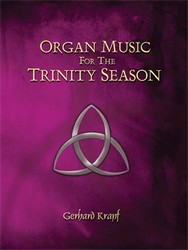- |
User Links
One People, Here, We Gather
Hymn Information
- First Line
- One people here, we gather
- Author
- Mary Louise Bringle, b. 1953
- Tune Name
- MUNICH
- Adapter and Harmonizer
- Felix Mendelssohn (1847)
- Tune Source
- <cite>Neu-vermehrtes Gesangbuch</cite>, Meiningen, 1693
- Topic
- Biblical Names and Places: Babel · The Church · Mission · Stewardship of Nature · Unity in Christ · Elements of Worship: Opening of Worship: Called And Gathered · Elements of Worship: Lord's Supper
Copyright Information
- Text Copyright
- © 2006 GIA Publications, Inc.
- Tune Copyright
- Public Domain
- Reprint/Projection Information
- Words: Permitted with a license from OneLicense.net. If you do not own this license, please contact the copyright holder for permission.
- Music: The Music is in the Public Domain; you do not need permission to project or reprint the Music.
Scripture References
Further Reflections on Scripture References
On the matter of unity among the people of God, see Ephesians 4:1-6. In Acts 2:1-13 see its display. In I Corinthians 10:14-16 see the unity expressed at the Lord’s Table. And in contrast see the origin of division in Genesis 11:1-9.
Confessions and Statements of Faith References
Further Reflections on Confessions and Statements of Faith References
In stanza 1, this song speaks of a “Pentecost of nations” and in doing so, acknowledges like Heidelberg Catechism, Lord’s Day 21, Question and Answer 54 does, which says: the Son of God gathers his church “…out of the entire human race, from the beginning of the world to its end.”
The Belgic Confession, Article 27 professes that the church is “…not confined, bound, or limited to a certain place or certain people…but it is spread and dispersed throughout the entire world...”
Our World Belongs to God, paragraph 30 testifies, “The Spirit of God gathers people from every tongue, tribe and nation into the unity of the body of Christ.”
In stanza 1, this song speaks about the “varieties of gifts” that God’s children possess. Heidelberg Catechism, Lord’s Day 21, Question and Answer 55 professes that God’s children should consider it a duty to use these gifts readily and joyfully for the full service and enrichment of the other members.”
The reference in stanza 1 of “one people” who “break one loaf together” finds its reference in Heidelberg Catechism, Lord’s Day 28, Question and Answer 76 when it says, “We are united more and more to Christ’s blessed body” and Question and Answer 77 when it says, “We who are many are one body, for we all partake of the one bread.”
One People, Here, We Gather
Tune Information
- Name
- MUNICH
- Key
- E♭ Major
- Meter
- 7.6.7.6 D
Recordings
One People, Here, We Gather
Hymn Story/Background
This text was the winning entry in a 2002 competition to create a convocation hymn for San Francisco Theological seminary. The text honors the multicultural constituency of the seminary (“a Pentecost of nations”), its commitments to study (“Mary’s better part”), and even its geography (“from coastal bays to mountains”). The next-to-the-last line, “reformed yet still reforming,” echoes the important Calvinist motto that the Church is semper reformanda, always being reformed in light of the ongoing work of the Holy Spirit.


 My Starred Hymns
My Starred Hymns






